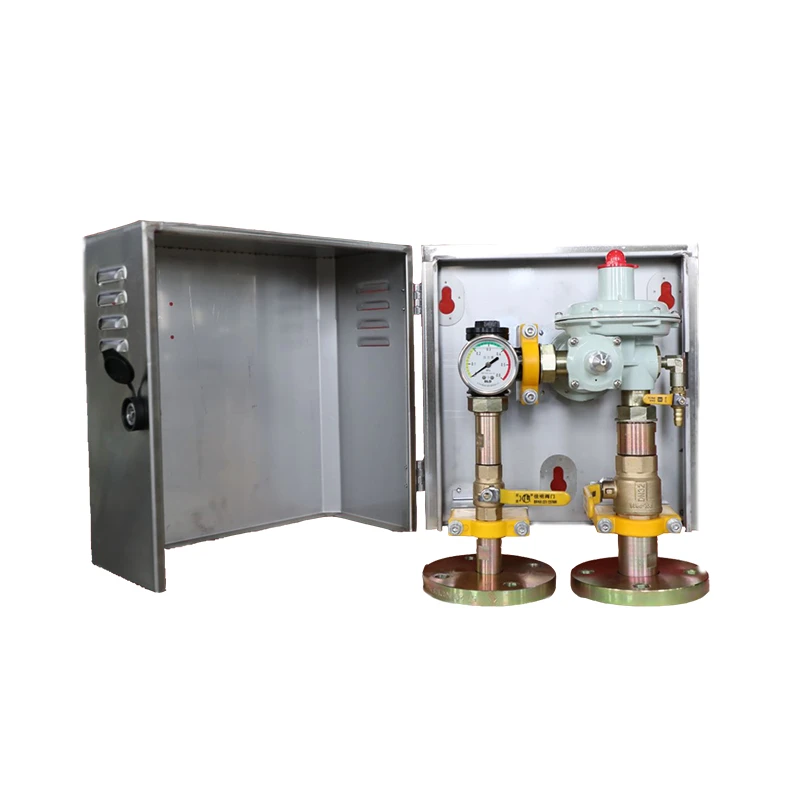
Oct . 15, 2024 13:55
Back to list
Gas Pressure Regulator and Its Essential Role in Safety and Efficiency
Gas Pressure Reduction Valve An Essential Component in Gas Systems
In various industrial and commercial applications, the management of gas pressure is crucial for both safety and efficiency. Gas pressure reduction valves (GPRVs) play a vital role in controlling the pressure of gas supplied to end-users, ensuring that it meets the necessary standards for safe operation. This article delves into the importance, functionality, and applications of gas pressure reduction valves.
Understanding Gas Pressure Reduction Valves
A gas pressure reduction valve is designed to reduce the high pressure of gas supplied from a main line to a lower, required pressure for use in various applications. These valves ensure that the gas entering an appliance or system is at the correct pressure, preventing potential damage or hazardous situations that may arise from excessive pressure.
The basic mechanism of a GPRV involves a spring-loaded diaphragm that responds to changes in downstream pressure. When the pressure exceeds the set level, the diaphragm moves, causing the valve to close partially, thereby reducing the flow of gas. Conversely, if the downstream pressure drops, the valve opens to allow more gas through, maintaining a stable pressure.
Importance of Gas Pressure Reduction Valves
1. Safety One of the primary functions of GPRVs is to enhance safety in gas systems. High pressure can lead to leaks or even catastrophic failures in appliances, pipelines, and other equipment. By ensuring that gas is supplied at a safe pressure, GPRVs minimize the risks of accidents.
.
3. Regulatory Compliance Many regions have strict regulations governing the use of gas systems. GPRVs help facilities comply with these regulations by providing a reliable means of pressure control. This compliance not only ensures safety but also helps in avoiding costly fines or legal repercussions.
صمام تخفيض ضغط الغاز

4. Economic Benefits Using GPRVs can also yield economic benefits. Proper pressure management can lead to reduced energy consumption and lower operational costs. Devices functioning under optimal conditions are less likely to fail or require maintenance, thus saving on repair costs and downtime.
Applications of Gas Pressure Reduction Valves
GPRVs are used in a wide range of applications across various industries, including
- Residential Heating In residential settings, GPRVs are crucial in controlling the pressure of natural gas supplied to heating systems, hot water heaters, and cooking appliances.
- Industrial Operations Many industrial processes rely on gases at specific pressures. This includes power generation, chemical manufacturing, and food processing, where GPRVs ensure that gas is supplied at regulated pressures for safe and efficient operation.
- Pipeline Systems In gas distribution networks, GPRVs are employed to manage pressure drops along pipelines, ensuring consistent and safe delivery of gas to consumers.
- Research and Development Laboratories and R&D facilities often require precise control of gas pressure for various experiments. GPRVs provide the necessary regulation for such applications.
Conclusion
Gas pressure reduction valves are indispensable components in the management of gas systems. Their ability to regulate pressure not only enhances safety but also promotes operational efficiency and compliance with regulatory standards. As industries continue to innovate and expand, the role of GPRVs will remain critical in ensuring the safe and effective use of gas. Whether in residential applications or large-scale industrial processes, understanding and implementing proper pressure control through GPRVs is essential for a reliable gas system.
Latest news
-
Safety Valve Spring-Loaded Design Overpressure ProtectionNewsJul.25,2025
-
Precision Voltage Regulator AC5 Accuracy Grade PerformanceNewsJul.25,2025
-
Natural Gas Pressure Regulating Skid Industrial Pipeline ApplicationsNewsJul.25,2025
-
Natural Gas Filter Stainless Steel Mesh Element DesignNewsJul.25,2025
-
Gas Pressure Regulator Valve Direct-Acting Spring-Loaded DesignNewsJul.25,2025
-
Decompression Equipment Multi-Stage Heat Exchange System DesignNewsJul.25,2025

